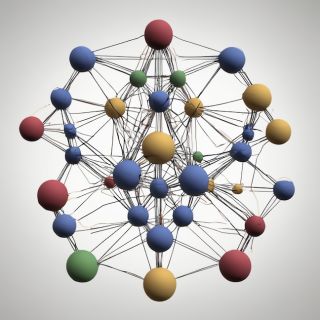Artificial Intelligence
Navigating Scale: Contrasting Human Systems and LLMs
The counterintuitive advantages of embracing complexity.
Posted April 8, 2024 Reviewed by Michelle Quirk
Key points
- Complexity challenges human team dynamics.
- LLMs thrive on scale, turning complexity into a strength and opportunity.
- Human-AI synergy offers potential to overcome complexity limitations and drive innovation.

Sometimes, it feels like we straddle the fence between simplicity and complexity. At times, a reductionist perspective helps with everything from defining perspective to granular decision-making. Yet, complexity often dominates our techno-reality. When it comes to human systems, complexity often serves as a barrier to optimal performance. The work of Richard Hackman provides foundational insights into the dynamics of team effectiveness and the challenges posed by complexity. His "roadmap" for navigating complexity offers powerful and human-centric solutions to these problems. But, I think it might be interesting to revisit Hackman's thinking in the context of our new artificial intelligence (AI), complexity-centric partners—large language models (LLMs).
The Bad News About Complexity
Hackman's research reveals a fundamental problem faced by large teams: the exponential increase in communication complexity. As teams grow in size, the effort required to maintain effective communication and coordination increases dramatically, often hindering productivity and results. This phenomenon, deeply ingrained in human nature, can be expressed mathematically as n(n-1)/2, where n represents the number of team members. In essence, this equation captures the mounting complexity that large human teams encounter. Each new member adds disproportionately to the network of potential interactions, elevating the risk of miscommunication and coordination difficulties. Whether in a business meeting or the expansive realm of social media, this complexity can become a significant obstacle, impeding the overall effectiveness of the system—from both social and cognitive complexity.
The Good News About Complexity
However, when we shift our focus from the intricacies of human organizational structures to the domain of computational intelligence, specifically LLMs, a striking contrast emerges. Unlike human teams, where increased size often leads to diminished efficiency, LLMs thrive on scale. In these models, the "nodes of connectivity," analogous to team members, are not encumbered by their increasing number; instead, they are empowered by it. Each parameter in an LLM serves as a node in an expansive network, contributing to the model's capacity to comprehend, generate, and interpret language with growing sophistication.
The architecture of LLMs is engineered to capitalize on the power of scale, transforming what is a constraining factor for human teams into a source of strength. As these models expand in size, they do not encounter the same exponential surge in complexity that human teams face. Instead, they benefit from a more comprehensive computational perspective, enabling the processing of enormous data sets and the generation of nuanced, context-aware responses.
The Synergy of Human Ingenuity and AI Prowess
This divergence presents a compelling narrative: While human systems grapple with the limitations imposed by complexity, LLMs offer a glimpse into an alternative dynamic where scale and complexity enhance the system's capabilities rather than impede them, and this fundamental difference in how complexity is navigated in LLMs versus human teams opens up exciting possibilities for innovation and problem-solving.
The fusion of human ingenuity and the computational prowess of LLMs heralds a new era of functionality. By combining the contextual understanding and creative abilities of humans with the data-processing and pattern-recognition strengths of LLMs, we can overcome the traditional limitations posed by complexity. This synergy allows us to address previously insurmountable problems, harnessing the best of both worlds to achieve efficient, innovative, and transformative outcomes.
Reframing Complexity as an Opportunity
In this light, the interplay between Hackman's insights into team dynamics and the capabilities of LLMs reframes our approach to complexity. It emphasizes the importance of interdisciplinary collaboration in leveraging the full potential of human and artificial intelligence. Embracing complexity can be an important yet counterintuitive perspective, and it holds the key to expanding our relationship with LLMs and driving new dynamics in various domains, from teamwork to the intricacies of scientific research.
The juxtaposition of Hackman's theories against the backdrop of LLMs not only deepens our understanding of complexity but also inspires a reimagined future where today's limitations become tomorrow's stepping stones. By considering this integrated approach and welcoming the challenges and opportunities that complexity presents, we begin to see our expanded partnership with LLMs in a wide variety of utilities.
References


